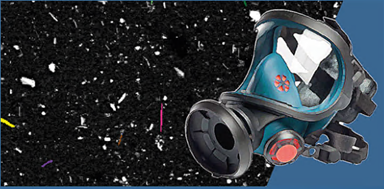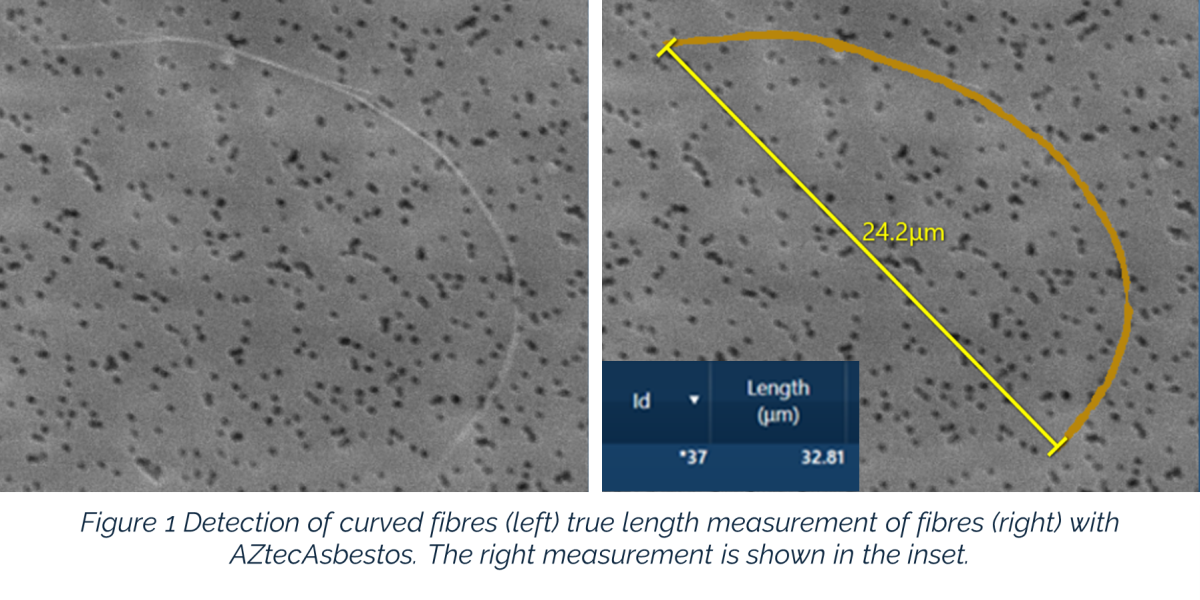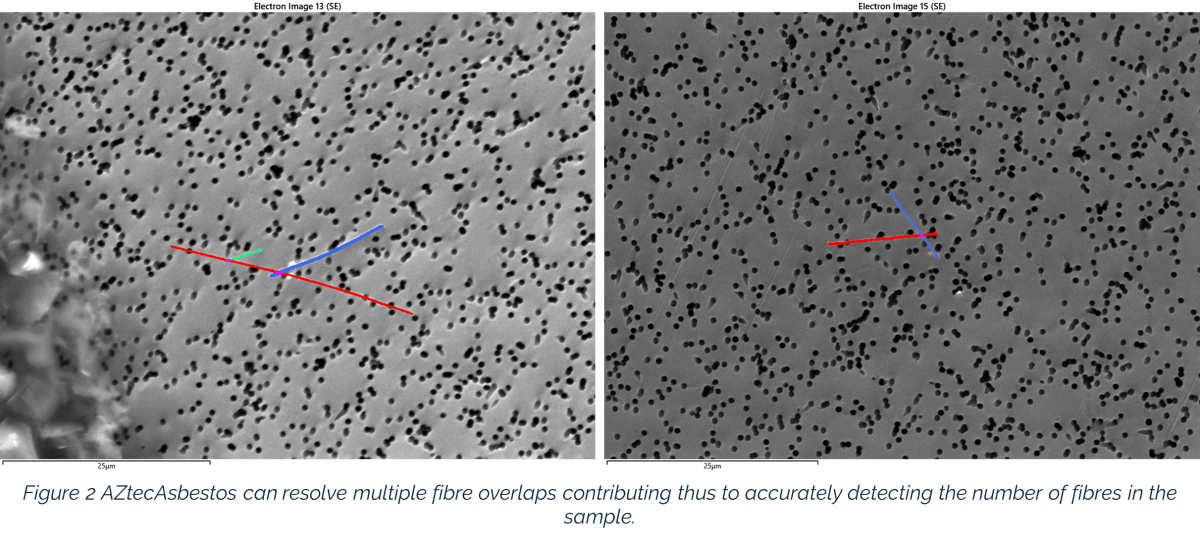What is asbestos?
Before we talk about AZtecAsbestos, we have to talk about asbestos. So, what is ‘asbestos’ and why is it so important to contain nowadays?
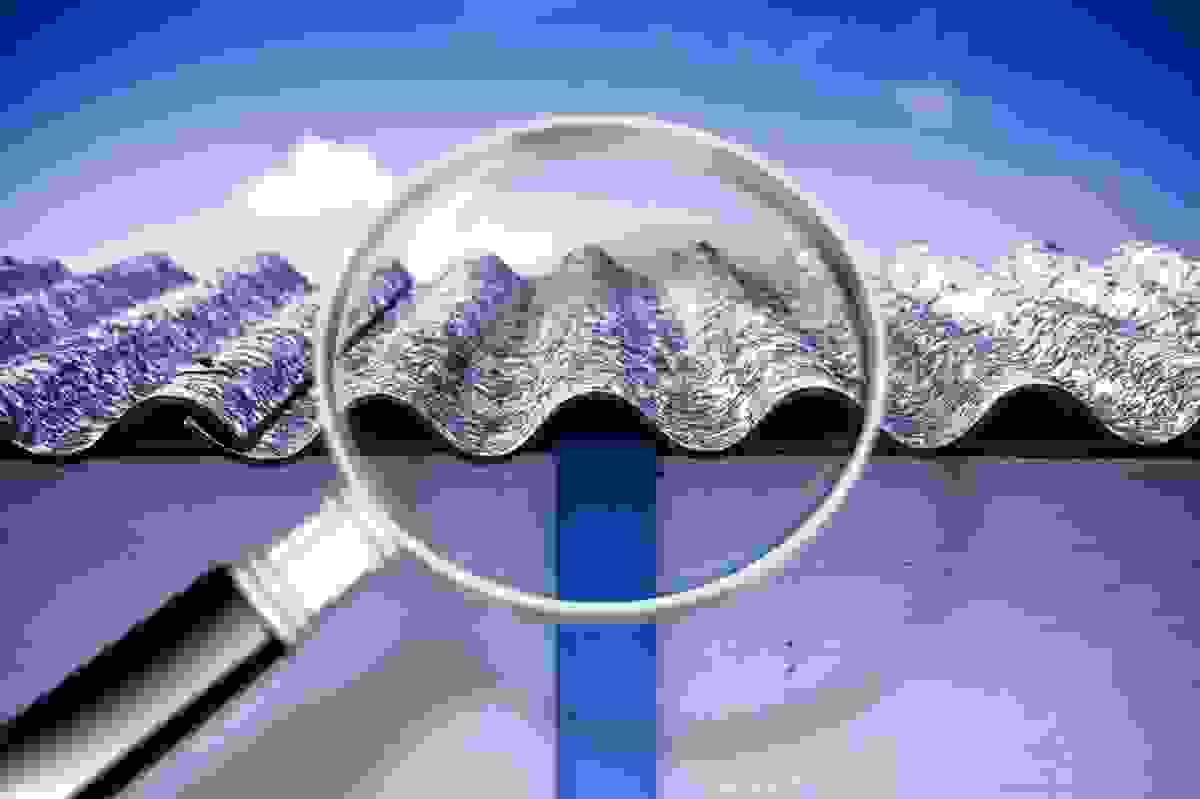
‘Asbestos’ is a collective term referring to a group of naturally occurring minerals which form with a fibrous structure. Asbestos fibres are resistant to heat, fire, chemical & biological degradation, and are also mechanically strong.
Because of the asbestos minerals’ material properties, asbestos has been used in the past as insulation material. As a result, it’s found in parts of many old buildings (e.g. in roofs) and in many other places. Asbestos fibres may be released to the environment by natural processes (e.g. erosion) or human activities (e.g. drilling, demolition of buildings etc.) and when inhaled may cause asbestosis and cancer.
There is a long list of countries that have already banned asbestos. The ban on some types of asbestos in the UK started in 1985. All types of asbestos were banned in the UK in 1999. The EU started banning its use in 1983 and by 2005, the use of asbestos was completely banned in the EU. From Australia to Canada and Egypt to South Korea, countries all over the world have also banned asbestos.
Given its negative effects on health, it is of huge importance to check if asbestos is present in suspect materials so that suitable remediation strategies can be implemented.
Scanning electron microscopy (SEM) coupled with energy dispersive spectroscopy (EDS) is a reliable and cost-effective way of identifying asbestos fibres and their composition. SEM offers precision in the detection and measurement of fibres on the microscale and nanoscale.
Why is AZtecAsbestos special?
Contrary to conventional particle analysis approaches, which typically use grey-level thresholding, AZtecAsbestos uses a pre-trained deep learning model for fibre detection. The implication of this for the user is that minimal input is required to setup the process of finding potential asbestos fibres; grey level thresholds do not need to be created by the user.
This has clear advantages for both ease of use and reliability as user bias or errors are eliminated. The algorithm used by AZtecAsbestos has been trained and tested on an extensive and diverse dataset of labelled images (25,000 images in the training dataset and 1,414 images in the testing dataset), and it has learnt to recognise the characteristics of fibre-like objects in electron images.
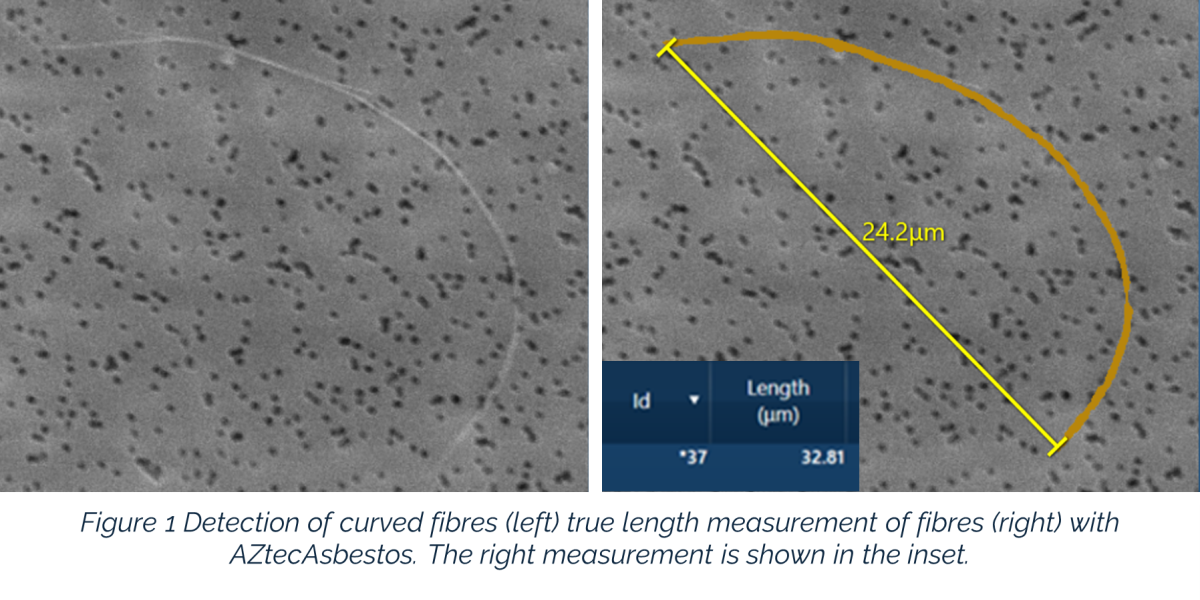
AZtecAsbestos measures the true length of fibres, even when they are heavily curved, and it can separate overlapping fibres. This helps in ensuring that the number of fibres detected isn’t either exaggerated or undercounted. Fibres on the edges of fields can also be reconstructed (consistent across the board for Feature Analysis) which also contributes to the accurate measurement of the number of fibres.

Ease of use
AZtecAsbestos is a dedicated software solution for the automatic detection and analysis of fibres. It comes with a navigator you can follow step-by-step. Moreover, the user profile provides:
- Preset acquisition settings (e.g. image resolution and EDS acquisition settings)
- A customisable classification scheme to help you get started, and
- Step Notes which can be used to:
- Train new users but also
- Describe SOPs in detail so that you consistently follow the same analytical routines within the same lab as well as across multiple sites.
AZtecAsbestos is based on the leading AZtecFeature particle analysis platform. All reports available for AZtec Feature are also available for AZtecAsbestos.
Conclusion
AZtecAsbestos is a novel, reliable, and user-friendly approach for the automatic analysis of fibres, which minimises user input and facilitates fibre detection. Moreover, it enhances overall ease of use, repeatability, and accuracy by making use of extensively trained deep learning algorithms.



